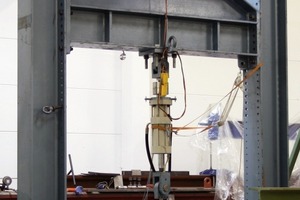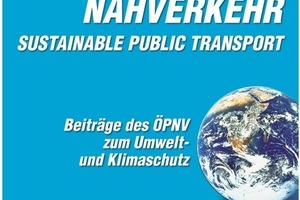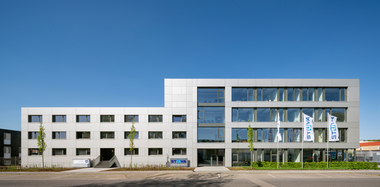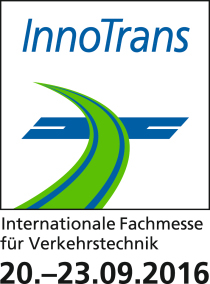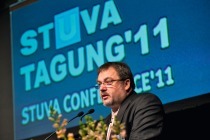50 Years of the STUVA – Future and Outlook
In June 2010 the Research Association for Underground Transportation Facilities – (STUVA) celebrated its 50th anniversary [5]*. Following a stimulating excursion with Prof. Girnau into the history of STUVA in tunnel 5/2010, p. 9 ff, we now focus on Dr. Roland Leucker’s view the STUVA’s future.
In tunnel 5/2010 we examined the foundation of the STUVA and the diverse tasks it was faced during the course of the past 50 years. Upon looking back it can be determined that tunnelling technology and the disciplines emerging from tunnel operation – such as for instance sound and vibration protection or barrier-free accesses – have developed further during this time to a great extent.
Does this mean that no further developments will result? Is further research in the field of STUVA’s activities still required? What will STUVA’s fields of activities be in the future?
These issues will be dealt with in the following report, whereby the term “STUVA” also embraces the fields of activity of the STUVAtec GmbH.
Starting Situation for Transport
The constant growth of trans-European transportation calls for modern and effective infrastructures – both for public commuter and mainline transportation as well as for private motoring and goods traffic. For this reason the European Parliament decided over 10 years ago to foster the development of the trans-European transport network and lay down guiding principles towards this end [1, 2]. The objectives of this Trans-European Transport Net-work, known as TEN-T for short (Fig. 1) are by and large the:
■ securing of passenger and goods traffic
■ creation of a high-quality infrastructure for the users
■ inclusion of all transport carriers
■ optimal utilisation of existing capacities.
This transport network is designed to span the entire Community territory and subsequently be able to link up with the networks of the EFTA* countries, the states of central and eastern Europe as well as the Mediterranean countries. It embraces the complete infrastructure, as e.g. roads, railway lines, inland waterways, ports and airports. Altogether the EU Commission published a list of 30 priority projects in 2004, which were embarked on before 2010.
This transport network also consists of tunnels especially in the case of roads and railway lines. Without these the many route alignments would not be possible in the first place. The routes crossing the Alps either planned, currently under construction or recently opened for operation are mentioned as outstanding examples.
Tunnelling Technology
The above-mentioned statements bear a remarkable amount of similarity with the ideas put forward by the STUVA initiator Karl Schmitz-Scholl. At the time Schmitz-Scholl proposed connecting the entire region from Cologne to Dort-mund “using the most modern technical means and at high as possible speeds”. All that has changed is the dimension: local and regional links have become supraregional and international ones. And the tunnel lengths have increased considerably. The significance of tunnelling as such has not altered and this ultimately led to the setting up of the STUVA.
As a consequence the STUVA will continue to preoccupy itself with optimising tunnelling through major and in situ tests. This applies both to new or improved construction methods as well as novel or optimised materials. Initial tests with segments made of high-strength, fibre-reinforced concrete have already been carried out at the STUVA [3] (Fig. 2). Towards this end also in future the STUVA will advocate cost-favourable tunnelling methods and supporting methods. In this connection short-term cost saving is not the aim but the overall cost development throughout the structure’s service life (Life Cycle Cost, LCC).
The diverse effects of the excavation methods on their surroundings and the environment nowadays exert a determining significance: let us mentioned in this connection for instance the reuse of excavated material, the application of environmentally compatible additives for EPB shields as well as novel ecologically friendly methods of blasting.
The STUVA’s involvement is as great as ever and the special knowledge acquired in the course of decades in the field of sealing technology. Apart from topics such as sealing areas, joint seals or designing expansion joints – also in related sectors such as waterproofing reservoirs – the connecting points “old” with “new” are of great significance especially for redevelopment or expansion measures – for they represent the weak points within the overall system.
In addition in future a great deal more thought must be given to maintaining, redeveloping and furnishing underground structures. Many tunnels, especially railway tunnels and Metro tunnels, which were built at the start of the 20th century but also the urban railway tunnels originating from the 1960s and 70s have to brought up to scratch. Towards this end cross-sectional enlargements are needed (railway) or safety-technical retrofitting. Furthermore the optimisation of maintenance work is at stake taking the usage cycle costs into account such as e.g. improving and simplifying repairs and maintenance work thanks to optimised materials. In this connection the development of methods and novel sensors for the automatic monitoring and inspection of tunnels is of great significance both for new structures as well as redeveloped ones.
There is also a substantial need for investments in future for public commuter transportation routes with respect to basic redevelopment (of tunnels). The municipalities will find themselves having to face considerable financial burdens particularly when the GVFG (Community Transport Financ-ing Act) expires. The STUVA has targeted itself to come up with solutions to finance the corresponding structural measures.
Safety
The topic of safety in underground construction embraces many factors. It relates to stability, industrial protection, safety during operation with the important consideration of fire protection and a great deal more, which all require individual scrutiny but are still related. The most important aspects are:
Stability: The latest events in Cologne have revealed that existing methods applied for monitoring construction and safety management do not always suffice and consequently must be improved and extended. The STUVA is involved in the forefront of such investigations. Alongside other institutions involved it will play its part in securing a new footing for safe tunnelling both nationally and internationally thanks to the recognitions obtained.
Industrial Safety: The STUVA embarked on the topic of industrial safety at an early stage. At the time the aim was to reduce negative influences such as dust, noise, diesel fumes, blasting fumes etc. as far as possible. Even although a great deal has been achieved in the course of decades, it is still imperative to be vigilant: new technologies can also result in new dangers. Further-more it is essential to ensure that the high German and European standards are established in other parts of the world.
Fire Protection, Safety in Operation: The STUVA has been engaged in the field of fire protection for underground facilities for many years. As a result it was and still is involved in many research projects, which are linked to this topic. Up till now protecting persons was accorded prime importance. However protecting property is also playing an ever growing role – especially in the case of long tunnels produced in tricky subsoil. Fires, which threaten the stability of a tunnel under a waterway, can have drastic consequences.
As in the past the STUVA will continue to contribute to improving tunnel safety in future as well. Topics such as fire protection, formation of fire and smoke sections, fire combating facilities, ventilation/smoke removal, video monitoring, fire detection, evacuating persons, crisis and emergency management and last but not least harmonising European and international regulations and standards are targeted here. Towards this end the interaction of individual components – such as e.g. as between water mist systems and tunnel ventilation – have a special part to play. Not simply from the technical viewpoints but from the economic one as well.
In addition the STUVA will continue to apply its expert knowledge for specific projects in the form of structural fire protection, fire and smoke gas distribution simulation and evacuation analysis in particular for the redevelopment and retrofitting of older tunnels.
Personal Safety: Apart from operational safety, in this respect especially with regard to fire protection as mentioned above, the topic of “safety” also relates to a further aspect: topics such as preventing crime and vandalism unfortunately are increasing in importance. Even although realistically there may be no need, the safety “felt” by passengers particularly in the case of the new long and deep-lying tunnels must be accorded increasing attention so that the tunnels also receive the necessary degree of acceptance. The aspect of “internal security” such as for instance protection against terrorist attacks plays an important role both regarding the aspect of stability as well as the aspects of personal safety and evacuation.
Transport and Accessibility
In addition to topics relating to the planning of public commuter facilities, effectivity analyses, operation, quality improvement, cost issues, research concepts or surveys accessibility has a special role to play in the STUVA’s work. The STUVA was involved in this field to a great extent in the past and in the interim has accumulated substantial knowledge and applied it for allied disciplines such as civil engineering. Notwith-standing there is still a need for research for instance in the following fields: evacuating disabled people from high-level and low-level facilities, emergency call facilities (on roads), accessibility in public commuter transportation (also making use of new technologies from other fields such as e.g. radio frequency identification, RFID), disabled persons in road and railway tunnels and mobility for the elderly (e.g. driver assistance systems).
Cost-favourable Rail Transit Systems, Noise and Vibration Protection
An effective infrastructure is the prerequisite for a modern society and economically essential. This also applies in particular for rail-bound traffic. However both with regard to the building of new communal railways as well as the renovation and improving of already existing lines increasingly low noise and vibration protection emissions are essential for approval to actually be obtained. The hydropulse system available at the STUVA can be used for assessing new developments by means of corresponding tests (Fig. 3).
At the same time financial aspects have an ever increasing role to play. In this connection not only the pure construction costs as such have to be considered but the costs for the entire utilisation phase of a system as well. There is a potential for future test and development work for example in the fields:
■ Innovative products (new solutions for solid slab tracks and low-cost mass-spring systems as well as improved solutions for the contact area between rail and roadway which call for low maintenance or none at all).
■ Innovative methods (automation of installation, minimising traffic interruptions or preventive and forward-looking maintenance methods for Metro superstructures) and
■ Harmonising essential standards throughout Europe.
In order to test new innovative products it is foreseen for example to retrofit the existing STUVA test facility (Fig. 4) in such a way that wheel-rail investigations are possible in addition to the pure lorry tyre operation. Towards this end powered wheels of a track-bound vehicle are to be operated under genuine conditions (speed and load) on a curved rail in order to be able to carry out wear tests on the contact area wheel/rail on the one hand and vibration examinations on various new types of superstructure on the other. Thanks to the possibility of being able to operate the complete system at between –30 °C and +60 °C seasonally affected influences can also be tested in practice.
Energy Efficiency, Environmental Protection
The topics energy efficiency and environmental protection are becoming of ever increasing importance against the background of restricted resources available on our planet. In this connection it is essential to point out methods, which on the one hand save energy in tunnels by means of novel systems and on the other to be able to exploit tunnel systems for generating energy as well. Towards this end the STUVA is to investigate the utilisation of geothermics close to the surface and residual heat from waste collectors. Furthermore aspects relating to energy efficiency both with regard to route alignment as well as designing underground stations are gaining in significance.
In addition it is imperative to work out the role played by public commuter transportation in environmental and climatic protection and to establish it on a wider basis. Here saving energy and reducing CO2 during ongoing operations are to be observed quite apart from including possibilities afforded by stations, constructing transport routes, operating facilities and workshops, rolling stock and last but not least gaining new passengers as part of an overall concept.
The STUVA has already carried out a certain amount of preliminary work in the above-mentioned fields. Furthermore with the support of the Federal Ministry of Transport, Building and Urban Development (BMVBS), the VDV circle of sponsors (Association of German Transport Companies) and the Forum for Transport and Logistics jointly founded by the DEVK Insurance and the VDV it is currently involved in a major project “Sustainable Public Transport – Contributions by Public Transport to Environ-mental and Climatic Protection”, which will appear in book form in September 2010 (Fig. 5) thus representing a new standard work within the scope of the Blue VDV Book Series.
Publications and Cooperation
The results of the STUVA’s research activities are widely acknowledged in practice through inclusion in rules and standards (examples: sealing, steel specifications, handicapped persons in public commuter transport, linking transport systems, furnishing road tunnels, noise and vibration protection for railways, multi-purpose buildings) as well as consulting relating to queries about concrete cases of application.
Access to the research and conference results for instance is assured through publications in the STUVA’s own book series “Research + Practice” and in publications by third parties (e.g. by the BMVBS or VDV). Furthermore reports are constantly to be found in magazines – also in the official STUVA journal “tunnel” published in two languages (German/En-glish) as well as in the form of lectures at national and international conferences.
The “STUVA Conferences”, which take place every two years (in each case November/December in uneven years) with varying main topics from the field of underground construction (Fig. 6), are inextricably linked with the STUVA.
The STUVA has always been committed to bringing together experts and the exchange of specialist knowledge. The development and the work of the DAUB (German Committee for Underground Construction Inc.) would scarcely have been possible without the STUVA’s involvement in the form pursued since its establishment in 1972. From the very beginning its office has been housed at STUVA headquarters. The same applies to the GCTP – German Con-struction and Technology Platform – since it was set up in 2005 – which serves the identification of the construction research market in Germany and in turn initiates corresponding research projects within the European Union. Close professional and personal contacts are also maintained with the German Society for Trenchless Technology (GSTT), the German Society for Geotechnics (DGGT) and of course the International Tunnelling and Underground Space Association (ITA).
Outlook
In future too the STUVA will devote itself to the tasks laid down in its statutes and examine the prerequisites and possibilities for the creation of underground transportation facilities and come up with corresponding proposals. Towards this end there is also the obligation to publish such recognitions and to ensure these are as widely propagated as possible. The STUVA conferences, which in the meantime have evolved into the meeting place for tunnellers, are especially suitable for this purpose.
In addition the STUVA will continue to expand its outstanding specialist knowledge and ensure its inclusion in norms, guidelines and recommendations. And it will continue to pass on its knowledge with the necessary neutrality both as a consulting service and for expertises.
The STUVA will thus foster innovative and economic systems in the field of underground construction and public commuter transport in the coming 50 years as well as a non-profit, neutral research association as well as a commercial company providing consulting services (STUVAtec).
Note
Further information pertaining to the history and the STUVA’s fields of activity is to be found in the jubilee publication “50 Jahre STUVA – Vergangenheit trifft Zukunft”. Should you want a copy please contact the STUVA office (www.stuva.de ).



